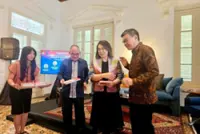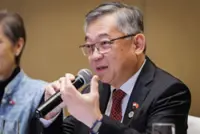(From left) PhD student Lai Kei Onn, Nanyang Assistant Professor Anna Barron and research fellow Wong Jia Hui are part of the team of 12 researchers from NTU who discovered how the brain powers the clearing of waste. - NTU
SINGAPORE (The Straits Times/Asia News Network): A team of 12 researchers from Nanyang Technological University (NTU) has shed light on how immune cells in the brain produce energy to clear toxic waste which would otherwise build up to cause Alzheimer’s disease.
The team’s discovery, which was published in the journal Proceedings Of The National Academy Of Sciences on Feb 14, could lead to the development of new drugs to treat Alzheimer’s, for which there is no cure yet and which accounts for 60 to 70 per cent of dementia cases, according to the World Health Organization.





